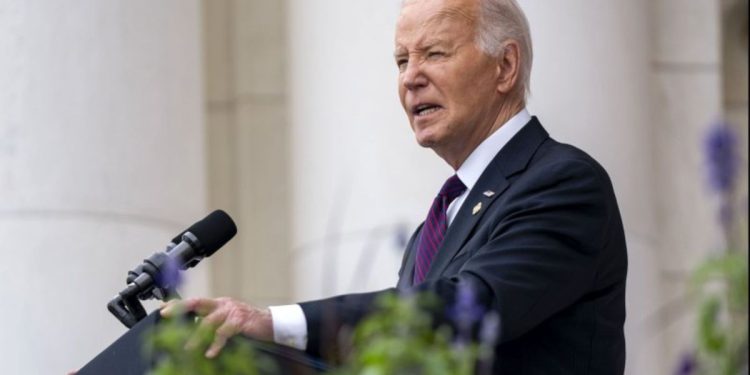The Biden administration took a significant step towards America’s transition to clean energy sources and the modernization of the outdated U.S. power grid infrastructure. During a White House summit, they unveiled a 21-state initiative aimed at directing this crucial transformation.
The “Federal-State Modern Grid Deployment Initiative” includes 21 states, all of which have Democrat governors. These states are Arizona, California, Colorado, Connecticut, Delaware, Hawaii, Illinois, Kentucky, Maine, Maryland, Massachusetts, Michigan, New Jersey, New Mexico, New York, North Carolina, Oregon, Pennsylvania, Rhode Island, Washington, and Wisconsin.
The White House Climate Policy Office and Department of Energy made the announcement on Tuesday during a summit attended by governors, regulators, utilities, labor unions, and industry leaders. The purpose of the summit was to explore innovative policy solutions that would facilitate the deployment of modern grid technologies and encourage the sharing of best practices, as stated in a news release.
During Tuesday afternoon’s meeting, Energy Secretary Jennifer Granholm expressed excitement about the funding and resources provided by the Grid Deployment Office for thirteen projects. She emphasized the utilization of these resources and funding, which are made available under President Biden’s bipartisan Infrastructure Law.
According to her, grid enhancing technologies can take on the majority of the increased demand. She emphasized that now is the perfect time to have a serious discussion about this matter.
According to Zaidi, the United States is making a substantial investment in strengthening the grid to prevent power outages during extreme weather conditions. He emphasized that this investment is the most significant public investment in a generation, amounting to tens of billions of dollars. The primary objectives of this investment are to enhance U.S. energy security, drive innovation, and ensure a reliable power supply.
“This year, we are set to witness the largest increase in electric generation capacity on the grid in the past twenty years,” he exclaimed, emphasizing that an incredible 96% of this capacity will come from clean energy sources. “It’s truly a remarkable milestone for us to reach.”
The Biden administration aims to achieve a carbon-neutral power grid by 2035. In their efforts to enhance the country’s power grid, they have already taken significant measures, despite the lack of action from Congress prior to the presidential election. One notable example is the ongoing upgrade of 100,000 miles of existing power lines.
Zaidi expressed his enthusiasm for the goals, describing them as both inspiring and attainable. He emphasized the available technology and workforce that can be utilized to achieve these targets.
During the White House summit, the International Brotherhood of Electrical Workers (IBEW) union official expressed their commitment and readiness to shape the future of the electrical grid.
According to Danielle Eckert, the director of government affairs at IBEW, as technology and infrastructure progress, the union’s training programs also adapt to ensure members are equipped with the necessary skills and knowledge. The goal is to enable a seamless transition from the classroom to the job site, particularly as the power grid continues to innovate and evolve.
In a significant milestone, renewable energy sources in the United States, including wind, solar, hydropower, biomass, and geothermal, have surpassed coal-fired generation in the country’s electric power sector for the first time in 2022.
According to the White House, the United States is set to construct a greater amount of new electric generation capacity in 2024 than it has in the past two decades. A whopping 96% of this capacity will be derived from clean energy sources. The objective behind this significant investment is to expedite the enhancement of the electric transmission and distribution network. This improvement is crucial in achieving the country’s targets for affordable, clean, reliable, and resilient power.
During his speech on Tuesday afternoon, Zaidi emphasized the need for a comprehensive set of solutions that can be implemented across different time scales.
According to Oil Price, even though coal power generation has decreased, it still maintains a significant portion of the U.S. electricity mix, surpassing any renewable energy source.










